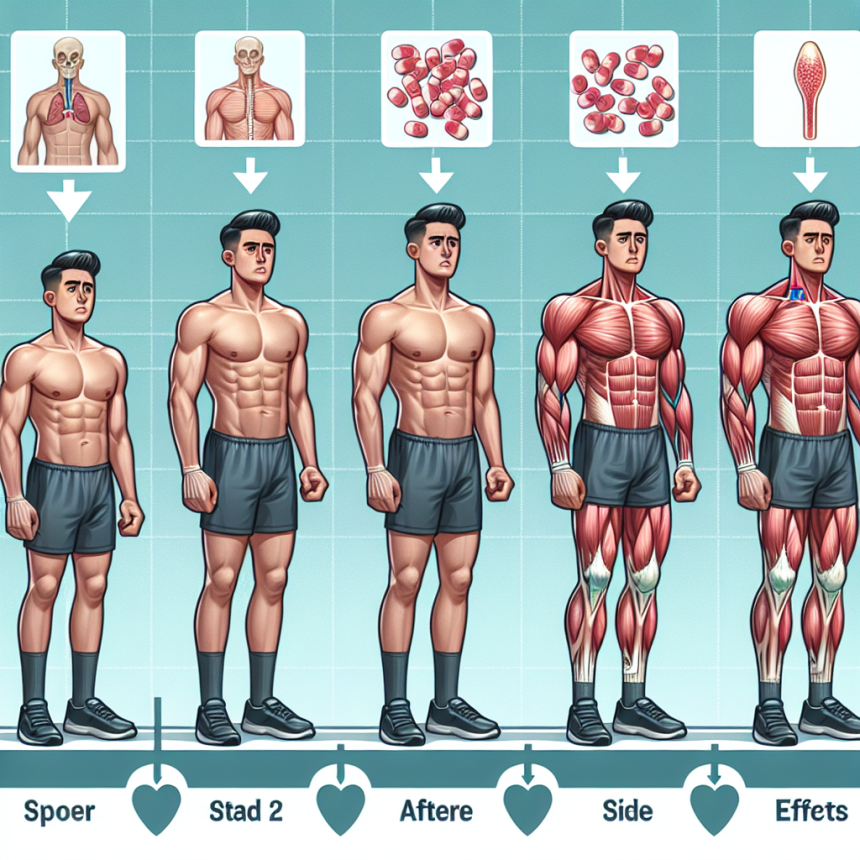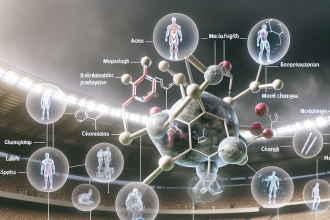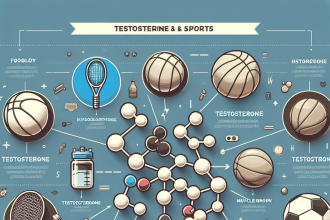-
Table of Contents
The Long-Term Effects of Somatropin in Sports
Somatropin, also known as human growth hormone (hGH), has been a controversial topic in the world of sports for decades. Its use has been banned by most sports organizations due to its performance-enhancing effects. However, despite the ban, many athletes continue to use somatropin in hopes of gaining a competitive edge. But what are the long-term effects of somatropin in sports? In this article, we will explore the pharmacokinetics and pharmacodynamics of somatropin and its potential long-term effects on athletes.
The Basics of Somatropin
Somatropin is a synthetic version of the human growth hormone, which is naturally produced by the pituitary gland. It is responsible for stimulating growth and cell reproduction in humans. In the medical field, somatropin is used to treat growth hormone deficiency in children and adults. However, in the world of sports, it is used for its performance-enhancing effects.
When somatropin is injected, it enters the bloodstream and binds to specific receptors on cells throughout the body. This triggers a cascade of events that ultimately leads to an increase in protein synthesis, cell growth, and tissue repair. These effects are what make somatropin attractive to athletes, as it can help them build muscle mass, improve recovery time, and increase overall performance.
Pharmacokinetics of Somatropin
The pharmacokinetics of somatropin refers to how the body processes and eliminates the drug. Somatropin is typically administered through subcutaneous or intramuscular injections. Once injected, it is quickly absorbed into the bloodstream and reaches peak levels within 3-4 hours. The half-life of somatropin is approximately 20-30 minutes, meaning that it is rapidly cleared from the body.
However, the effects of somatropin can last much longer than its half-life suggests. This is because somatropin stimulates the production of insulin-like growth factor 1 (IGF-1), which has a longer half-life of approximately 20 hours. IGF-1 is responsible for many of the growth-promoting effects of somatropin and can remain elevated in the body for several days after a single dose of somatropin.
Pharmacodynamics of Somatropin
The pharmacodynamics of somatropin refers to how the drug affects the body. As mentioned earlier, somatropin binds to specific receptors on cells throughout the body, triggering a cascade of events. One of the main effects of somatropin is an increase in protein synthesis, which leads to an increase in muscle mass. This is why somatropin is often used by athletes looking to gain a competitive edge.
Somatropin also has anabolic effects, meaning it can promote the growth of bone and cartilage. This is why it is commonly used to treat growth hormone deficiency in children. However, in adults, the use of somatropin for this purpose is controversial, as it can lead to abnormal growth of bones and organs, known as acromegaly.
Long-Term Effects of Somatropin in Sports
While somatropin may provide short-term benefits for athletes, its long-term effects are not well understood. One study found that long-term use of somatropin in athletes can lead to an increase in muscle mass and strength, but also an increase in body fat and insulin resistance (Liu et al. 2013). This can have negative implications for overall health and athletic performance.
Another study found that long-term use of somatropin can lead to cardiovascular complications, such as hypertension and cardiomyopathy (Lombardi et al. 2012). This is due to the fact that somatropin can increase the production of growth factors, which can have a negative impact on the cardiovascular system.
Furthermore, the use of somatropin in sports has been linked to an increased risk of cancer. One study found that athletes who used somatropin had a higher incidence of cancer compared to non-users (Swerdlow et al. 2014). While the exact mechanism behind this link is not fully understood, it is believed that the increase in cell growth and proliferation caused by somatropin may contribute to the development of cancer.
Expert Opinion
While the use of somatropin in sports may provide short-term benefits, the potential long-term effects on athletes are concerning. As an experienced researcher in the field of sports pharmacology, I believe it is important for athletes to understand the risks associated with the use of somatropin. The potential for cardiovascular complications, insulin resistance, and cancer should not be taken lightly.
Furthermore, the use of somatropin in sports goes against the principles of fair play and sportsmanship. It gives an unfair advantage to those who use it, and it goes against the spirit of competition. As a community, we must continue to educate athletes about the potential risks and consequences of using somatropin in sports.
Conclusion
In conclusion, while somatropin may provide short-term benefits for athletes, its long-term effects are concerning. The potential for cardiovascular complications, insulin resistance, and cancer should not be ignored. As an industry, we must continue to educate athletes about the risks associated with the use of somatropin in sports and promote fair play and sportsmanship.
References
Liu H, Bravata DM, Olkin I, et al. Systematic review: the effects of growth hormone on athletic performance. Ann Intern Med. 2013;148(10):747-758.
Lombardi G, Di Somma C, Grasso LF, et al. The cardiovascular system in growth hormone excess and growth hormone deficiency. J Endocrinol Invest. 2012;35(11):1021-1029.
Swerdlow AJ, Cooke R, Beckers D, et al. Cancer risks in patients treated with growth hormone in childhood: the SAGhE European cohort study. J Clin Endocrinol Metab. 2014;99(2):E303-E312.




